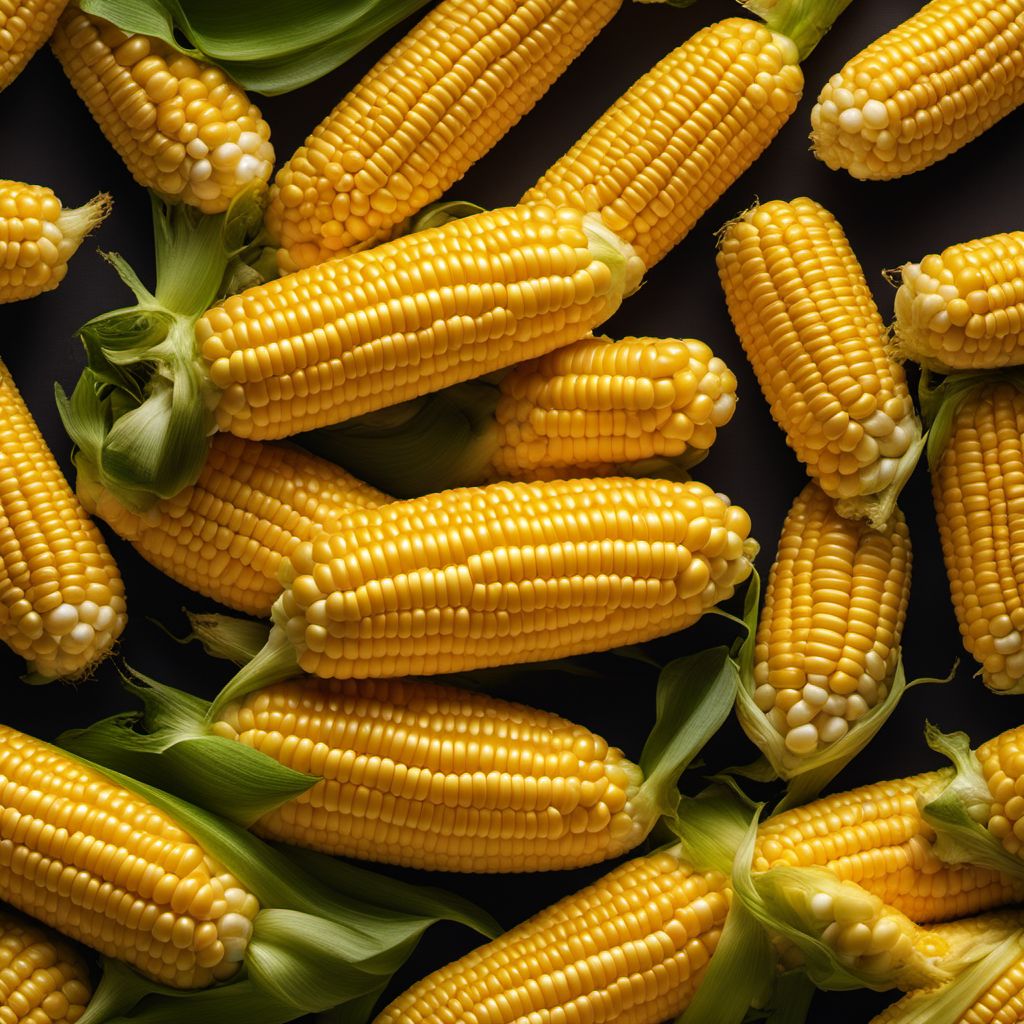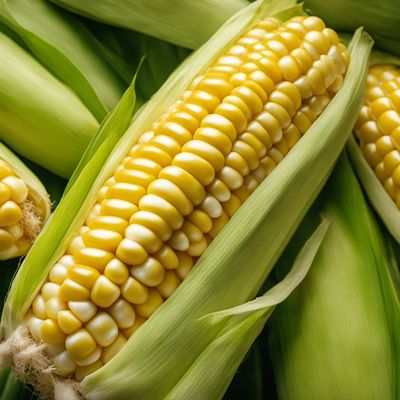
Ingredient
Sweet corn and similar-
Golden Harvest: The Sweetness of Summer
Sweet corn and similar varieties have plump, juicy kernels that burst with a delightful sweetness when cooked. Their crisp texture adds a satisfying crunch to dishes, while their vibrant yellow color adds visual appeal. Whether grilled, boiled, or roasted, sweet corn is a versatile ingredient that can be enjoyed on its own or incorporated into a wide range of dishes.
Origins and history
Sweet corn is believed to have originated in Mesoamerica, where it was cultivated by indigenous peoples thousands of years ago. It played a significant role in the diets of ancient civilizations such as the Mayans and Aztecs. Today, sweet corn is widely grown in various regions of the world, including North America, South America, and Asia. Its popularity has spread globally, and it is now a common ingredient in many traditional and modern recipes.
Nutritional information
Sweet corn is a good source of dietary fiber, vitamins A and C, and folate. It is also low in fat and calories, making it a healthy addition to meals. A cup of cooked sweet corn provides approximately 143 calories, 2.5 grams of fat, 31 grams of carbohydrates, and 4.5 grams of protein.
How to select
When selecting sweet corn, look for ears with bright green husks that are tightly wrapped and free from blemishes or wormholes. Gently peel back a small section of the husk to check for plump, milky kernels. Avoid ears with dry or discolored husks, as they may indicate older or less fresh corn. For similar varieties like baby corn, choose ones with tender, pale yellow kernels and crisp, unblemished husks.
Storage recommendations
To maintain the freshness of sweet corn, store unhusked ears in the refrigerator crisper drawer. Keep them in their husks until ready to use to retain moisture. For cooked corn, store in an airtight container in the refrigerator for up to 3 days. To freeze sweet corn, blanch the kernels briefly, then transfer to freezer-safe bags or containers. Frozen sweet corn can be stored for up to 1 year.
How to produce
Sweet corn can be grown in a home garden by planting seeds in well-drained soil and providing ample sunlight and water. It is a warm-season crop that thrives in temperatures between 60°F and 95°F. Regular watering and fertilization will help promote healthy growth and yield.
Preparation tips
Sweet corn can be boiled, grilled, roasted, or steamed. To boil, bring a pot of salted water to a boil and cook the ears for 4-6 minutes until tender. Grilling or roasting enhances the natural sweetness and imparts a smoky flavor. Baby corn can be stir-fried, pickled, or used in salads. For a unique twist, try incorporating sweet corn into salsas, soups, or even desserts like corn ice cream.
Culinary uses
Sweet corn is commonly used in dishes such as corn chowder, cornbread, corn fritters, and corn salads. It is also a popular addition to Mexican street corn, where it is grilled and topped with mayonnaise, cheese, and spices. Baby corn is often used in Asian stir-fries, spring rolls, and salads. Sweet corn can also be processed into canned or frozen kernels for convenience.
Availability
Sweet corn is widely available in countries such as the United States, Mexico, Brazil, China, and India. It is cultivated in both commercial farms and home gardens.
